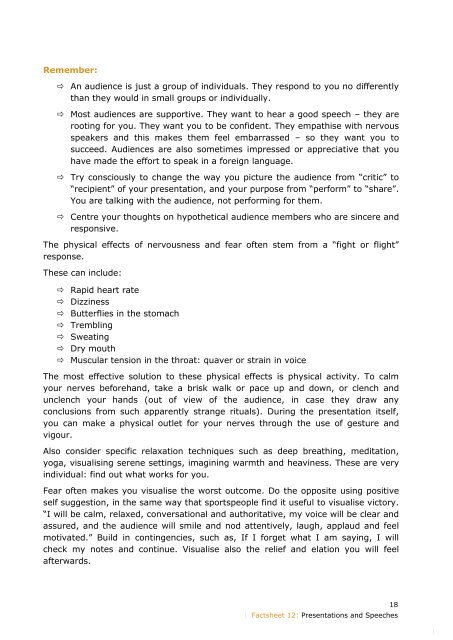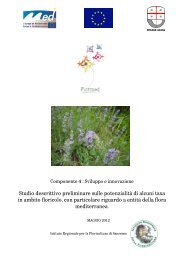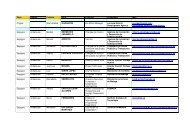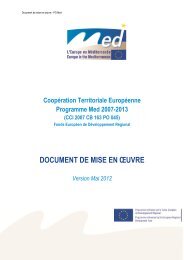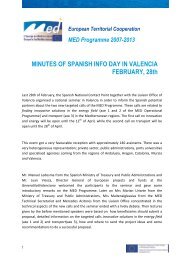MED Communication Handbook - Programme Med
MED Communication Handbook - Programme Med
MED Communication Handbook - Programme Med
Create successful ePaper yourself
Turn your PDF publications into a flip-book with our unique Google optimized e-Paper software.
Remember:<br />
� An audience is just a group of individuals. They respond to you no differently<br />
than they would in small groups or individually.<br />
� Most audiences are supportive. They want to hear a good speech – they are<br />
rooting for you. They want you to be confident. They empathise with nervous<br />
speakers and this makes them feel embarrassed – so they want you to<br />
succeed. Audiences are also sometimes impressed or appreciative that you<br />
have made the effort to speak in a foreign language.<br />
� Try consciously to change the way you picture the audience from “critic” to<br />
“recipient” of your presentation, and your purpose from “perform” to “share”.<br />
You are talking with the audience, not performing for them.<br />
� Centre your thoughts on hypothetical audience members who are sincere and<br />
responsive.<br />
The physical effects of nervousness and fear often stem from a “fight or flight”<br />
response.<br />
These can include:<br />
� Rapid heart rate<br />
� Dizziness<br />
� Butterflies in the stomach<br />
� Trembling<br />
� Sweating<br />
� Dry mouth<br />
� Muscular tension in the throat: quaver or strain in voice<br />
The most effective solution to these physical effects is physical activity. To calm<br />
your nerves beforehand, take a brisk walk or pace up and down, or clench and<br />
unclench your hands (out of view of the audience, in case they draw any<br />
conclusions from such apparently strange rituals). During the presentation itself,<br />
you can make a physical outlet for your nerves through the use of gesture and<br />
vigour.<br />
Also consider specific relaxation techniques such as deep breathing, meditation,<br />
yoga, visualising serene settings, imagining warmth and heaviness. These are very<br />
individual: find out what works for you.<br />
Fear often makes you visualise the worst outcome. Do the opposite using positive<br />
self suggestion, in the same way that sportspeople find it useful to visualise victory.<br />
“I will be calm, relaxed, conversational and authoritative, my voice will be clear and<br />
assured, and the audience will smile and nod attentively, laugh, applaud and feel<br />
motivated.” Build in contingencies, such as, If I forget what I am saying, I will<br />
check my notes and continue. Visualise also the relief and elation you will feel<br />
afterwards.<br />
18<br />
� Factsheet 12: Presentations and Speeches<br />
�


